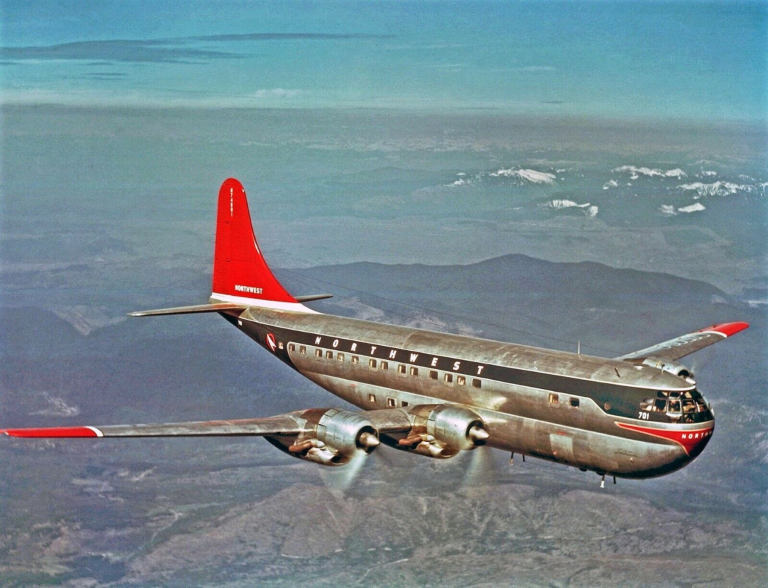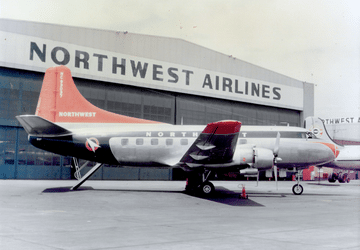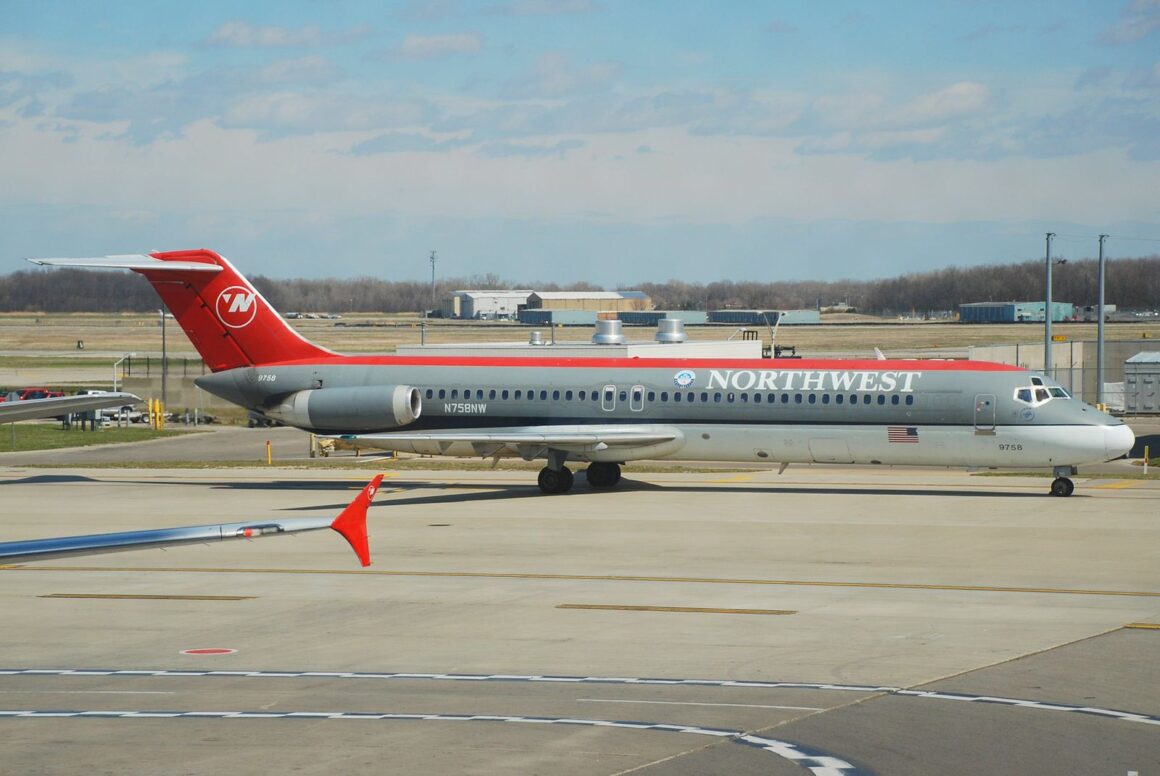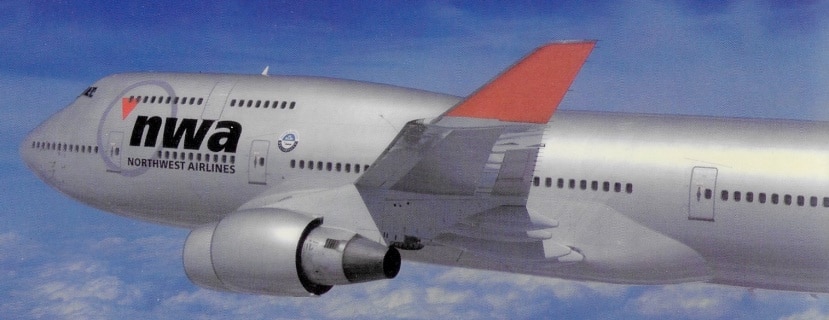Northwest Airlines was a pioneer in transpacific travel, but it was far from the most loved airline at times.
Aviation enthusiasts fondly recall Northwest Airlines, known for its red-tailed planes and vast Pacific network, but these memories are quickly fading since its merger with Delta Airlines over 15 years ago.
Many of those who remember Northwest probably lived in its hub cities, such as the Twin Cities of Minneapolis-St.Paul (MSP), Detroit (DTW), Seattle (SEA), and Memphis (MEM), as well as a whole host of other “northern-tier” cities in the United States.

Northwest airplanes were fixtures in the skies above Asian cities such as Tokyo, Seoul, Hong Kong, Manila, and Taipei. For this reason, Northwest Airlines became Northwest Orient Airlines in 1947. The airline had an extensive network and grew into a fierce Pacific competitor.
Many air travelers remember this legacy airline with mixed emotions. If you lived in Asia, where Northwest dominated for years, flying on the airplanes with the red tails was a matter of prestige and affluence.
Northwest merged with Republic in 1986. When it acquired and merged with Republic Airlines in 1986, the airline dropped the “Orient” part of its name, symbolizing its growing US network to complement its strong international routes.
Residents of smaller communities in the western United States and the Upper Midwest—like Fargo, ND (FAR); Bismarck, ND (BIS); Great Falls, MT (GTF); Helena, MT (HLN); Bozeman, MT (BZN); Butte, MT (BTM); Missoula, MT (MSO); Spokane, WA (GEG); Rochester, MN (RST); and Madison, WI (MSN)—also miss Northwest and the numerous destinations It offered to such small cities. Northwest’s service was the primary way that residents in those cities could escape the winter cold to worldwide destinations on mainline jets.
In later years, Northwest struggled with labor relations and elderly aircraft. In 2008, it was absorbed into Delta Airlines as part of a merger.
Pacific Pioneers
Throughout its history, Northwest Airlines achieved remarkable feats, especially in the Pacific region, showcasing the ingenuity and dedication of its workforce. Its early accomplishments rivaled those of iconic carriers like Pan Am, cementing Northwest’s legacy as a pioneering airline.

In 1931, Northwest developed its Great Circle Route to Asia from the United States via Alaska. This new way of flying halfway around the globe saved thousands of miles from the previous way across the Pacific, developed by Pan American Airways. The “long way” pioneered by Pan Am traversed the Pacific through Hawaii and other islands like Midway, Wake, and Guam.
Northwest partnered with Charles and Anne Lindbergh to publicize its new way of traveling to Asia. Lindbergh was an American hero who, just four years earlier, flew nonstop across the Atlantic from America to France.
In the 1940s and throughout World War II, Northwest flew troops and supplies for the US Government to Alaska. These men and materiel would eventually find their way to the war front in Asia. Shortly after the war, Northwest started painting the tails of its airplanes red since they flew over rough terrain in the western US, Canada, and Alaska. The company wanted rescuers to be able to find their airplanes if they went down in rough terrain or bad weather.
The airline grew with extensive service to Asia in the 1960s and 1970s, flying the 707, then later the 747 and DC-10 across the vast distances of the Pacific. Northwest even set up a domestic-like feeder network in Japan and other nearby nations with 727s and later 757s to connect asian cities to their international network.
Challenging Middle Years
In the late 1940s, Northwest wanted to get a jump on its competition, which was flying leftover DC-3s and DC-4s from the war. They contracted to eventually purchase 40 Martin 2-0-2s from the Martin Company. These airplanes were based, in part, on the designs Martin developed for bombers during World War II. Unfortunately, from 1948 through 1951, Northwest suffered five fatal Martin 2-0-2 crashes. They finally grounded the Martins and canceled all further orders. The Martin 2-0-2 debacle almost ruined the airline.

At the same time Northwest was dealing with the Martin 2-0-2 issues, they were also flying Douglas DC-4s. Flight 2501, a DC-4 flying from New York to Seattle, went down in Lake Michigan with 58 aboard. Some debris and human remains were found floating on the water, but the wreckage was never found. Divers still search for the wreckage to this day.
Another infamous incident happened in 1971. A passenger who bought his ticket under the name “D.B. Cooper” hijacked a Northwest 727 as it flew between Seattle and Portland. When the plane returned to Seattle, he was given $200,000 in ransom and parachutes obtained from the Issaquah Skyport just outside of Seattle. Cooper demanded to be flown to Reno. While the 727 flew over southwestern Washington State, Cooper parachuted out of the aft open stairwell. Cooper was never found, but some of his money was discovered along the banks of the Columbia River in 1980.

Northwest Airlines’ Fleet History Was Especially Diverse
Northwest’s fleet of aircraft over its long history was impressive. Throughout its long history, Northwest flew a wide variety of airplanes: DC-3s, DC-4s, DC-6s, DC-7s, DC-9s, DC-10s, Martin 2-0-2, Boeing 377 Stratocruiser, Lockheed L-188 Electra, Boeing 707s, 727s, 747s, and 757s, plus several others. It tried utilizing Super Constellations and even Douglas DC-8s. Northwest later sealed a deal with Airbus and flew a large fleet of Airbus A319s, A320s, and A330s.

Many avgeeks remember that toward the end of their history, Northwest was known for flying an extensive network with elderly DC-9 aircraft. In the late 1990s, the airline refurbished its fleet with modern interiors instead of buying newer and more efficient jets, as other airlines were doing at the time. The move did save the airline money initially. However, the rapid rise in fuel prices in the early 2000s led to significant expenses as they operated a significantly less efficient fleet than their competitors. Delta finally retired the last Northwest DC-9 (in Delta colors) in 2014.
Labor Relations And Coorporate Raiders Resulted In A Mixed Legacy Of Service
There are probably as many negative memories of Northwest, too, though. It wasn’t always in jest when air travelers would sometimes call the airline “Northworst.” The company was notorious for its turbulent labor relations and the numerous strikes it had to endure from its unions. Because the airline had such a strong presence in their hubs and Midwest cities, many passengers felt trapped by the need to fly on an airline with disappointing on-time arrivals, old aircraft, and disappointing service.
The airline was also known for its penny-pinching and severe cost-cutting measures, especially in the 1990s and 2000s, when corporate raiders used Northwest to make themselves rich at the expense of employees, their families, and the flying public.
In the 1990s and 2000s, Northwest suffered economic and air travel downturns after the Gulf War and the September 11, 2001, terrorist attacks. The airline’s previous debts, corporate governance challenges, and geriatric aircraft made it particularly vulnerable.
Northwest Reaches The End of Its Road

Northwest filed for bankruptcy in September 2005, emerging in May 2007 with a new paint scheme and a renewed emphasis on service. Unfortunately, that new focus was short-lived as the spike in oil prices in 2008 and the Great Recession forced a wave of consolidations between airlines in the industry.
In April 2008, Northwest announced it would merge with Delta Airlines. The merger was completed in January 2010, ending a proud legacy of the red tails plying the Pacific. Still, Northwest Airlines was a pioneer of the airline industry, connecting the Pacific in unique ways. Despite difficulties throughout the years, they were an airline with a proud history, many outstanding employees, and many firsts that grew the Pacific market into what it is today.
